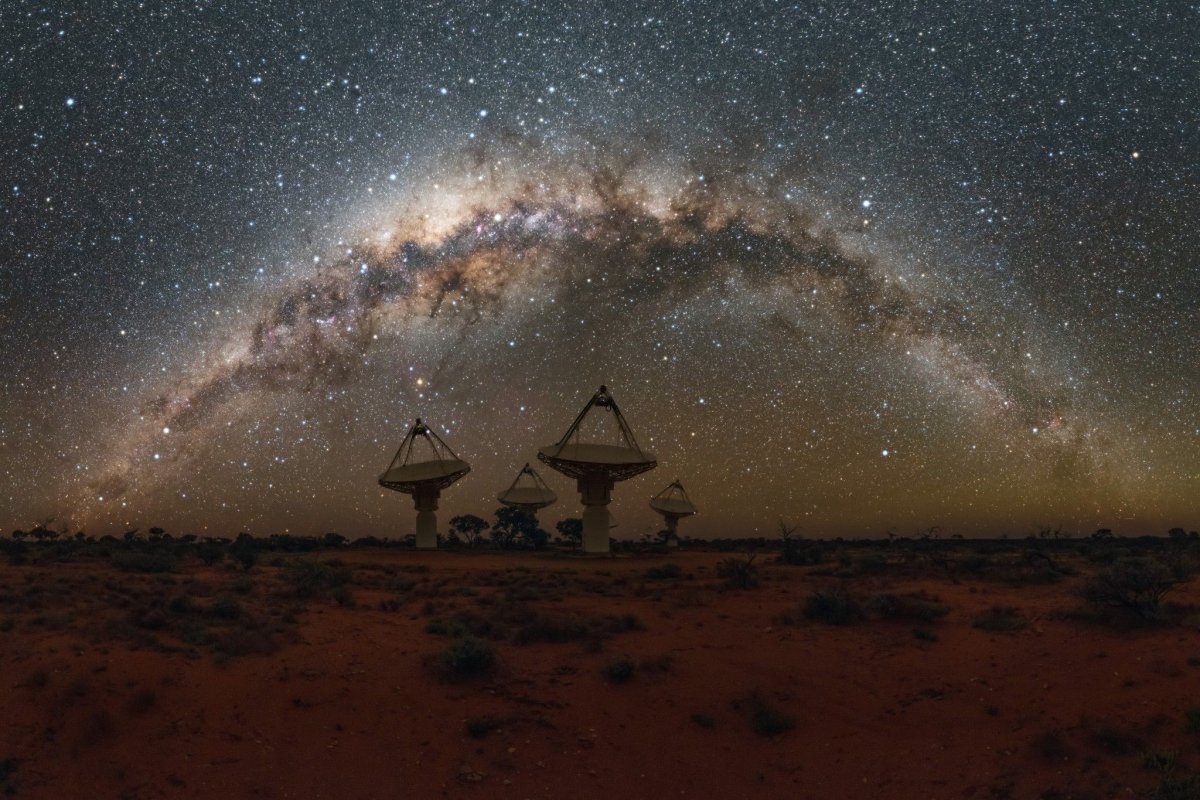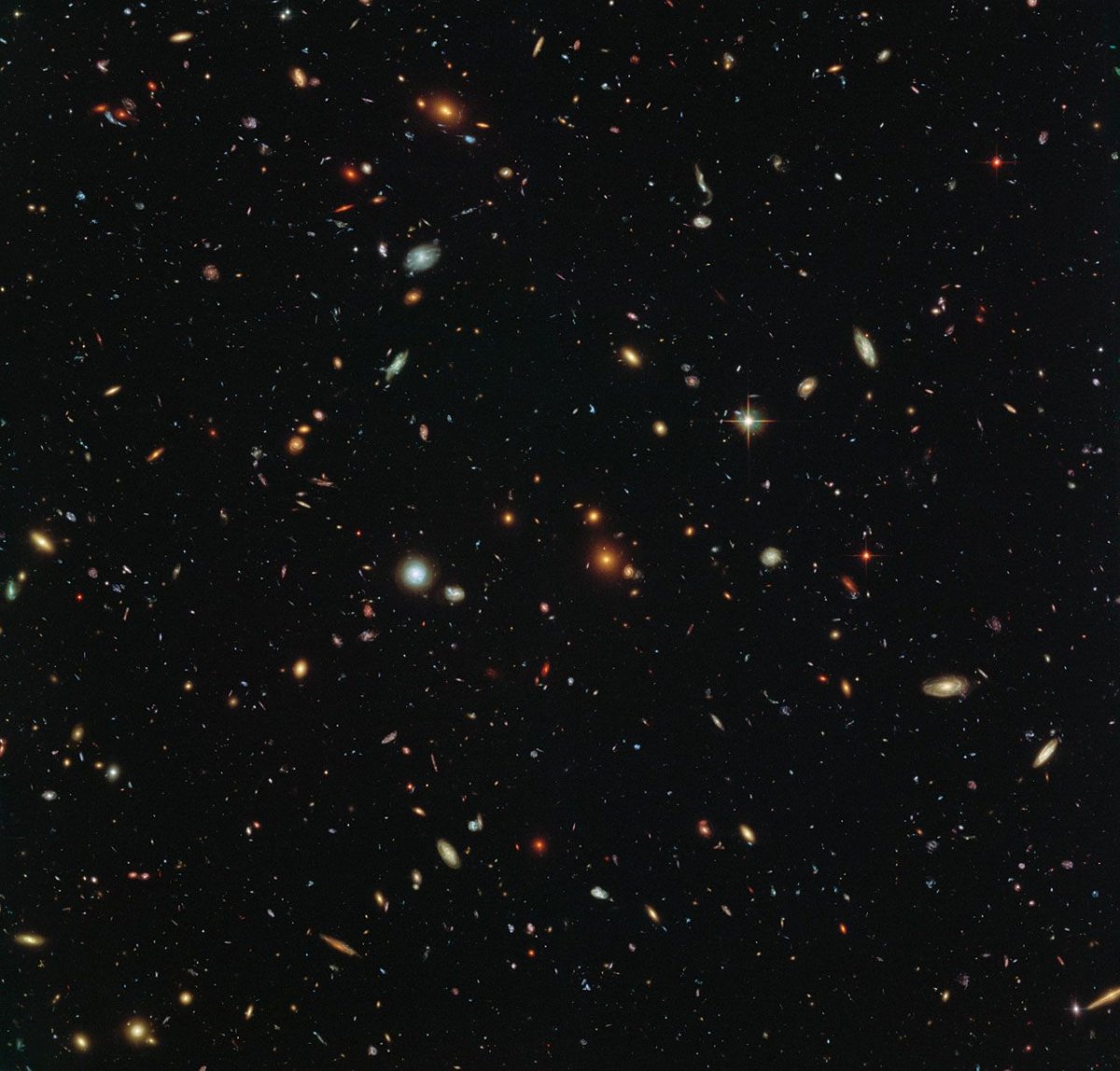Dozens of radio signals emanating from deep space have been discovered. These signals—known as fast radio bursts (FRBs)—were first discovered just over a decade ago and since then have posed a mystery for scientists studying them.
FRBs last just a few milliseconds and appear to be coming from a source beyond the Milky Way. They are picked up by radio telescopes—but are normally only found by scientists in the data long after the event has ended. They have previously been compared to seeing the flash of a camera in a pitch black room, then trying to work out where the camera is located while still in the dark. Around 40 separate events have been detected in total.
Another problem with studying FRBs is that they seem to mostly be one-off events. To date, only one repeating FRB has been discovered. FRB 121102 has been recorded repeating. Recently Breakthrough Listen—an initiative to find intelligent alien life elsewhere in the universe—announced 72 more bursts had been discovered. The source of this burst has been identified as a galaxy 3.7 billion light-years away—but what is causing it still defies explanation.
In a study published in Nature, a team of scientists from Australia has announced the discovery of another 20 FRBs, vastly expanding the number of events recorded.

The researchers began their survey of the sky in January 2017. They used the Australian Square Kilometre Array Pathfinder (ASKAP) telescope and pointed each of the available antennas toward a different area of the sky. This gave them a wide view of space, allowing them to scan for FRBs.
Over the course of the year, they found 20 previously unknown FRBs. None of these were found to repeat, although they were able to get a better idea of how far away the source of the bursts is. "We've proved that fast radio bursts are coming from the other side of the universe rather than from our own galactic neighborhood," Ryan Shannon, from Swinburne University of Technology, said in a statement.
The bursts travel for billions of years. As they do, they pass through clouds of gas. When this happens, the wavelengths the burst is composed of slow slightly. This allows scientists to work out how much material the burst has traveled through, giving an indication as to how far it has come. One of the FRBs found was the "nearest and the most energetic bursts detected so far," making it a prime candidate for future study, the researchers say. Identifying this FRB's host galaxy will help distinguish between different burst sources.
As to what is causing the FRBs, scientists are still very much in the dark. Some have suggested one-off cataclysmic events like a neutron star collapsing into a black hole could produce them, but this wouldn't explain the existence of the repeating FRB.
Andrew Siemion, Director of the Berkeley SETI Research Center and Principal Investigator on Breakthrough Listen, commented on the study. "The latest results from the ASKAP FRB team are very exciting," he told Newsweek. "In addition to nearly doubling the number of known FRB sources, this work reveals the existence of a population of very bright FRB sources that had been expected, but not known, to exist.
"The tentative identification of a host galaxy for one of the bursts will surely prompt additional follow-up. The fact that these discoveries resulted from the team's ingenuity in extending ASKAP's already large field-of-view to the extreme is yet another demonstration of how exploring new parameter space can result in dramatic discoveries."
"As is standard for FRB research up to this point, this work raises more questions than it answers. What is the cause of the diverse spectral properties seen in the bursts? Why were none of these bursts seen to repeat, even after very extensive follow-up? Do these FRBs represent a fundamentally different population than the one well-studied FRB known to repeat? As the team continues to build their observation capabilities, improving the fidelity of the captured data products as well as their ability to localize bursts, insights into the answers are likely to follow."

Shannon told Newsweek they are planning to study the patch of the sky where the closest burst appeared to come from. "Our position uncertainty isn't good enough to pinpoint the burst to a particular host galaxy. However because the burst is so close, when we look in the patch of the sky where the burst is located; there are only a few catalogued galaxies (galaxies people have identified in the past). One of them is 'close' (on the scale of the Universe) at a distance of about 100 million light years. Nearby bursts will be useful for understanding what causes them, because it is easier to study their host galaxies in more detail."
He said the repeating FRB is something of "an elephant in the room" when it comes to defining the phenomenon causing the bursts. "The differences between the repeating FRB and the non-repeating ones are too big to ignore. If this is the case there could be two different phenomenon producing FRBs. That would be very interesting."
In terms of what he thinks could be producing FRBs, Shannon says neutron stars or black holes are good candidates as they can produce short flashes. "Our result has confirmed that the energies associated with FRB production are enormous, making the processes that cause them very different than what we observe locally. Neutron stars (in particular highly magnetized neutron stars) might be the favoured origin, because we see vaguely similar emission from neutron stars in our own galaxy, but it is a trillion times less intense that what FRBs produce.
"We'll need to find more to confirm the cause of FRBs. We'll also need a better theory for how to produce them, given the enormous amount of energy in the events."
This story has been updated to include quotes from Ryan Shannon.
Uncommon Knowledge
Newsweek is committed to challenging conventional wisdom and finding connections in the search for common ground.
Newsweek is committed to challenging conventional wisdom and finding connections in the search for common ground.
About the writer
Hannah Osborne is Nesweek's Science Editor, based in London, UK. Hannah joined Newsweek in 2017 from IBTimes UK. She is ... Read more
To read how Newsweek uses AI as a newsroom tool, Click here.








